Water pressure reducer in the water supply system: purpose, device, regulation rules
The water supply system does not only consist of pipes that transport water to supply points. It includes devices and mechanisms to stabilize the operation of the pipeline.
One of these elements is the water pressure reducer in the water supply system - the device solves the problems associated with changes in fluid pressure. It is also called a pressure reducing valve.
We will figure out in which cases it is necessary to use a gearbox, how the device works, and what are the design features of various modifications. In addition, we describe the installation technology and give an example of the adjustment of a pressure reducing valve.
The content of the article:
What is a pressure reducer?
WFD (water pressure reducer) is not installed on all systems. For example, in typical city apartments, where water is supplied in a centralized manner, it cannot be found. But this does not mean that the pressure is not regulated, just the device is installed in the pipeline to apartment wiring.
Autonomous water supply, as well as centralized, also needs to be regulated by pressure. It is also necessary at industrial enterprises, farms, public institutions - wherever the water supply system operates. Let us consider in more detail what role the pressure reducing valve plays and whether it is necessary.
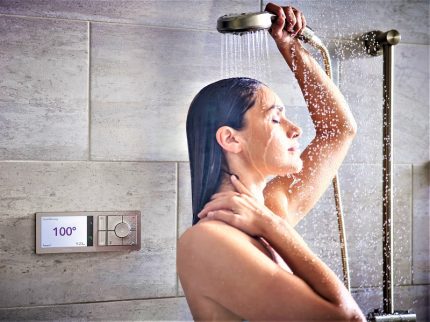
Purpose and principle of operation
A simple construction mechanism, however, performs very important functions. It protects not only the water supply system itself from pressure drops, but also equipment connected to it and sensitively responding to changes in water pressure.
A few reasons to install the WFD:
Only with stable water pressure heating equipment fulfills its service life and does not require frequent repairs. It is noticed that if there is a gearbox in the boiler piping that stabilizes the pressure of the water, the equipment lasts longer and its parts do not wear out so quickly.
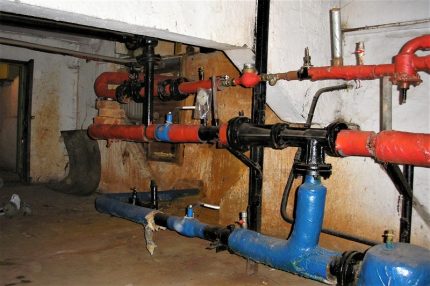
The main function of a water pressure reducer is to regulate the pressure of water in the pipeline, to protect against water hammer and other troubles associated with a sharp increase or pressure surges. Most often, the gearbox is installed between the valve for supplying water to an autonomous or internal system and the point of consumption.
The operation of the pressure reducing valve consists in automatic adjustment, that is, for full functioning it is not necessary to connect additional equipment or mechanisms. In the case of increasing water pressure, the device independently reduces the performance, so that the water supply to boilers, boilers and taps is normalized.
Description of the work process:
- well water or a centralized system moves with a certain stable pressure;
- for technical or other reasons, a pressure surge occurs, there is a risk of failure of equipment connected to the water supply system;
- water under increased pressure enters the gearbox, acts on the spring or membrane;
- the cross section of the valve automatically decreases, followed by a decrease in pressure;
- the liquid gets to the water taps at a pressure not exceeding the established norms.
The pressure surge arising in the water supply system is called water hammer.
It can happen both in a multi-storey building and in a cottage, and the result of a sudden increase in standard parameters is the failure of expensive equipment or pipeline elements.
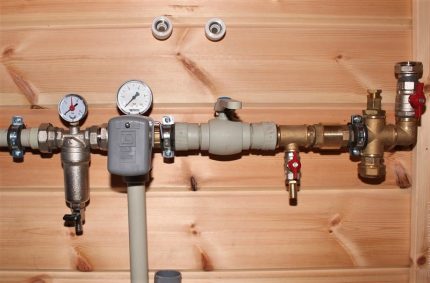
Thus, the WFD is the main tool to prevent undesirable consequences from water hammer, which can be independently installed in the home water supply system.
The regulatory framework can be found in the documentation - GOST 55023, GOST 12678, methodical literature of the Research Institute of Plumbing.
Types and design features
Household regulators should be distinguished from industrial and commercial, and not only in size. In households, productivity is much lower - on average 3 m³ / h, while in industrial valve gearboxes to reduce water pressure it reaches 15 m³ / h and higher.
Household appliances are usually connected to the water supply system in a clutch manner, and more productive ones are installed on the trunk lines using flanges.
Almost all gearboxes are made from metals, most often from brass or brass alloys. The body is made in the form of a cross, the side pipes are designed for threaded connections to the pipeline, the upper and lower for additional devices, for example, a pressure gauge.
There are two types of gearboxes that differ in design:
- piston;
- membrane.
They are named after the main active element located inside the case.
Piston gearboxes. The working part of the first category is a piston or piston assembly, which, under the influence of a spring, closes the target.
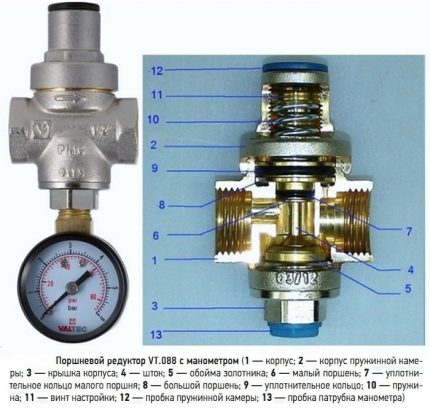
When water begins to flow under increased pressure, the spring presses on the piston, it reduces the flow area. Thus, the liquid in the inlet chamber is under greater pressure than in the outlet. Therefore, the pressure in the wiring located after the gearbox will remain normal.
Piston pressure regulators are used for water supply and heating systems, if the temperature of hot water and coolant does not exceed the upper limit set by the manufacturer.
Diaphragm gearboxes They are considered more powerful, durable, wear-resistant, less sensitive to poor quality fluid in the pipes. However, their cost is higher than piston counterparts.
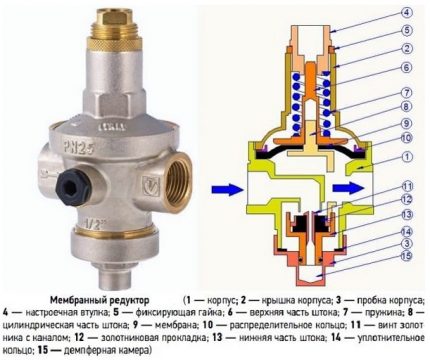
The principle of operation of the membrane gear is similar to the one described above. Water flows under high pressure into the inlet chamber, presses on the stem. Under the voltage created by the spring and the rod, a gap is formed, through which water enters the outlet with a lower pressure.
Membrane models, characterized by greater throughput and durability, are able to reduce pressure from 25 bar or more to 6-7 bar or even lower.
If the inlet pressure is within normal limits, the fluid moves freely through the pressure reducer without changing its parameters.
Installation and adjustment rules
If there are skills in working with pipes, then you can do the installation of the WFD yourself. Beginners should not experiment, it is better to invite plumbers for responsible work.
Installation is carried out in the following order:
- We get a couple of products - for cold and hot water, preferably a membrane type. We also prepare tools and supplies for sealing - fum tape or tow, grease. You will need keys and a threading tool.
- We turn off the water in the risers by notifying the neighbors in advance.
- We install an inlet valve on the pipe after the counter in front of the stopcock. We use the threaded method.
- First we fix the coarse filter, then the gearbox.
- We seal the joints.
- If necessary, install a pressure gauge. We position it so that the dial is clearly visible.
- We connect the regulator to ball valveseal.
After installation, connect the water, turn off the ball valves and test the equipment.
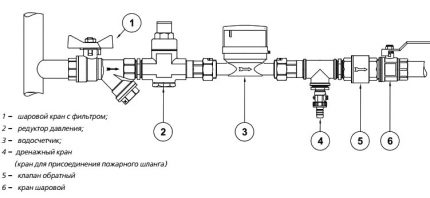
The installation sequence of the regulator in the house is the same as for apartment installation.
Most pressure regulators are manufactured and sold with factory settings. A pressure value of 3 bar is considered. If you want to reduce or increase the set parameters, the adjustment can be done independently.
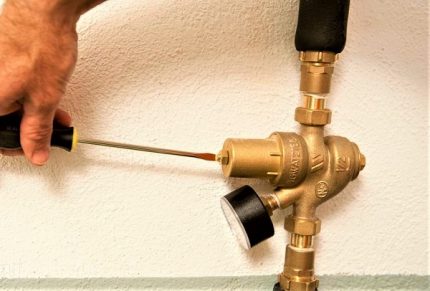
DIY adjustment example. Initially, a pressure of 6 bar was set on the gearbox with pressure gauge; it was necessary to change it to 3 bar.
As a result, the pressure at the inlet and outlet should be different. At the entrance, as originally - 4.5 bar, at the exit after adjustment - 3 bar.
This method is simple, performed right on the spot. It is not necessary to remove the device from the pipe. Adjustment on the table is made when a new one is installed instead of the old device or when the gearbox is mounted for the first time.
A device without a pressure gauge is more difficult to maintain, since it is impossible to control indicators. Usually twist at random, focusing on the result. But we still recommend using a temporary pressure gauge, inserting it instead of the plug.
Conclusions and useful video on the topic
Professional view of pressure reducers:
Useful Theory:
Adjustment tips can also be found in the instruction manual of the device. If it is not (which is possible when ordering a gearbox in China), you can guess the method of changing the parameters by carefully studying the design of the device.
In case of difficulties, we recommend contacting professional plumbers who know exactly how to quickly and correctly adjust the water pressure in the apartment. You can also consult with them on choosing a suitable regulator.
Share with your readers your experience with using a pressure reducer for a water system. Tell us what the choice of the device was based on, and whether you are happy with the purchase. Please leave comments on the article, ask questions and participate in discussions. The contact form is located below.

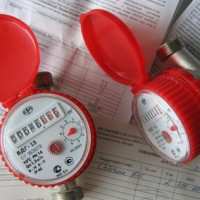 Water supply and sanitation rules: balance calculation + norms of water supply and consumption
Water supply and sanitation rules: balance calculation + norms of water supply and consumption 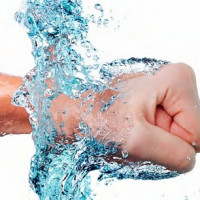 Water hammer in the water supply and heating system: reasons + preventive measures
Water hammer in the water supply and heating system: reasons + preventive measures 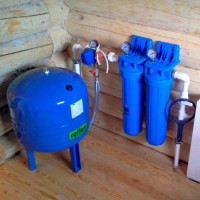 Expansion tank for water supply: selection, design, installation and connection
Expansion tank for water supply: selection, design, installation and connection 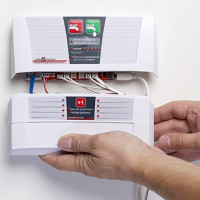 Overview of protection against water leaks “Aquastorozh”: device, advantages and disadvantages, installation rules
Overview of protection against water leaks “Aquastorozh”: device, advantages and disadvantages, installation rules 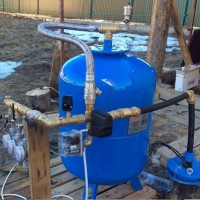 Hydraulic accumulators for water supply: operating principle, types, how to choose the right one
Hydraulic accumulators for water supply: operating principle, types, how to choose the right one 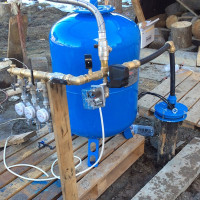 Do-it-yourself hydraulic accumulator: device, principle of operation, installation features
Do-it-yourself hydraulic accumulator: device, principle of operation, installation features  How much does it cost to connect gas to a private house: the price of organizing gas supply
How much does it cost to connect gas to a private house: the price of organizing gas supply  The best washing machines with dryer: model rating and customer tips
The best washing machines with dryer: model rating and customer tips  What is the color temperature of light and the nuances of choosing the temperature of the lamps to suit your needs
What is the color temperature of light and the nuances of choosing the temperature of the lamps to suit your needs  Replacement of a geyser in an apartment: replacement paperwork + basic norms and requirements
Replacement of a geyser in an apartment: replacement paperwork + basic norms and requirements
When I installed a water pressure reducer in the water supply system of my private house, I was faced with the dilemma of choosing a type of reducer. He chose the membrane type, as advised in the material above, and made sure of its reliability! Since the installation of gearboxes for hot and cold water, they have been working properly; they did not have to be replaced. I’ll add from myself that when assembling the gearbox, special attention should be paid to sealing. For maximum reliability, I would recommend using not only a fum tape, but also a special sealing grease. It must be used in addition to the fum tape, smearing it with such lubricant layer by layer. With this method of sealing, the knees assembled with the gear will not leak, and everything will be under control!
A pressure reducer is no less important element of an autonomous water supply than a hydraulic accumulator or a borehole pump. We have all the equipment located in the underground concrete caisson. Having rummaged on the Internet, I settled on a membrane-type gearbox. He is reliable. It works only 3 years, but there were no failures. In addition, there is the possibility of adjustment, which I took a year ago.
Hello, tell me please, I can’t understand - there is a drying pipe in the bath, but for some reason it doesn’t warm me. It is water, delivered through hot water. Tell me how to properly install the valve so that the water flow goes?
Hello, Victoria. It would be nice if you attached at least an approximate diagram of how your wiring is arranged.So it would be much easier to understand what the problem is in order to give specific advice.
And so you have to walk for the main reasons that could lead to the fact that your heated towel rail does not heat up:
1. It is commonplace to drain the water, possibly an air congestion has formed;
2. Clogging is possible; it is necessary to clean the inside of the towel rail;
3. The pressure in the system has fallen;
4. The hot water valve is shut off.
The last point is the easiest, I will attach a few photo schemes so that you can understand where you need to check the position of the valves. If this does not help, then you will have to call the wizard.